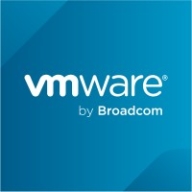

VMWare Tanzu CloudHealth and Cisco UCS Director are in the cloud infrastructure management space. VMWare Tanzu CloudHealth has an advantage in cost management and analytics, while Cisco UCS Director stands out for its comprehensive automation capabilities.
Features: VMWare Tanzu CloudHealth offers detailed cost analysis, automated cost optimization, and multi-cloud management capabilities. Cisco UCS Director provides extensive orchestration, workload automation, and integrated infrastructure support.
Room for Improvement: VMWare Tanzu CloudHealth could enhance its automation features, expand its integration capabilities, and improve scalability for bigger enterprises. Cisco UCS Director may improve its user interface for ease of use, simplify initial setup procedures, and enhance cross-platform support.
Ease of Deployment and Customer Service: Cisco UCS Director involves a more complex deployment process fitting for larger enterprise environments, providing dedicated support for implementation challenges. VMWare Tanzu CloudHealth allows for a simpler setup and quicker onboarding, favorable for organizations seeking rapid implementation, with effective customer support.
Pricing and ROI: VMWare Tanzu CloudHealth is known for competitive pricing and quick ROI through efficient cost management. Cisco UCS Director, despite potentially higher initial setup costs, offers significant ROI through its automation features that lower manual management overhead.
| Product | Market Share (%) |
|---|---|
| Cisco UCS Director | 1.4% |
| VMWare Tanzu CloudHealth | 1.9% |
| Other | 96.7% |


| Company Size | Count |
|---|---|
| Small Business | 4 |
| Midsize Enterprise | 1 |
| Large Enterprise | 11 |
| Company Size | Count |
|---|---|
| Small Business | 4 |
| Midsize Enterprise | 2 |
| Large Enterprise | 4 |
Cisco UCS Director enables automated delivery of physical and virtual data center resources, empowering data centers to move at the speed of business.
VMware Tanzu CloudHealth, formerly known as VMware Aria Cost Powered by CloudHealth, is a specialized cloud management platform tailored for Multi-Cloud Cost Optimization. It offers comprehensive visibility into cloud spending across various providers, enabling users to identify areas for optimization and make informed resource allocation decisions. With features like reserved instance management, resource rightsizing, and automated cost governance policies, it facilitates financial management for optimal cost efficiency. Beyond cost optimization, Tanzu CloudHealth enhances cloud operations through workload optimization and governance automation, catering to multi-cloud environments encompassing public, private, and hybrid clouds. Its primary focus remains on enabling organizations to effectively manage and reduce cloud expenditures while supporting operations across diverse cloud platforms.
We monitor all Cloud Management reviews to prevent fraudulent reviews and keep review quality high. We do not post reviews by company employees or direct competitors. We validate each review for authenticity via cross-reference with LinkedIn, and personal follow-up with the reviewer when necessary.